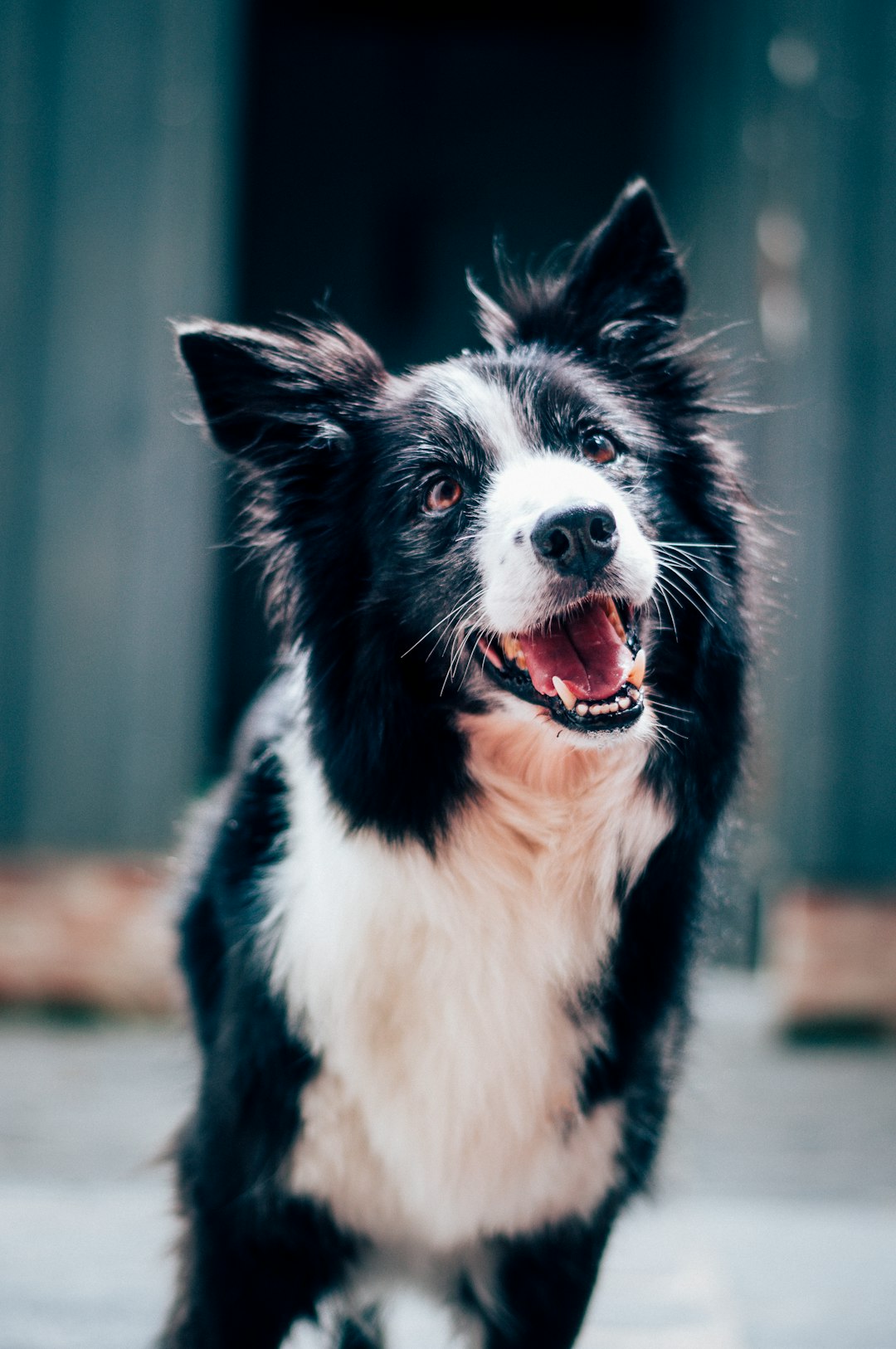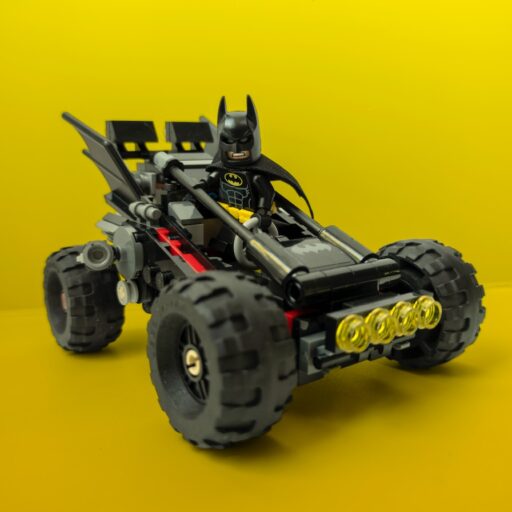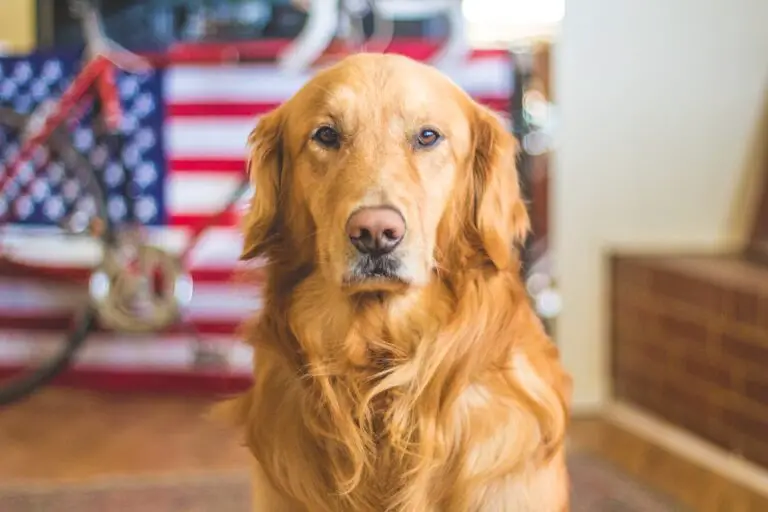Support our educational content for free when you purchase through links on our site. Learn more
What Was the Name of the Robot Dog Toy in the 90s? 🤖🐾 (2025)
Remember that magical moment in the 90s when a little robotic pup blinked its LED eyes and “sang” a tune, capturing the hearts of kids everywhere? If you grew up wondering what was the name of that robot dog toy in the 90s, you’re about to get the full scoop! From the iconic Poo-Chi to lesser-known electronic pups, we’re unpacking the history, tech, and nostalgia behind these mechanical mutts. Plus, we’ll share tips on collecting and even repairing these vintage treasures.
Did you know that Poo-Chi sold over 10 million units in just eight months? That’s a whole lot of wagging tails and beeping barks! But what made these toys so special, and how do they stack up against today’s AI-powered companions? Stick around — we’ve got the answers, plus a countdown of the top 7 robot dogs that defined a generation.
Key Takeaways
- Poo-Chi was the most famous 90s robot dog toy, known for its LED eyes and singing abilities.
- Early robot dogs like Tekno and WowWee Mega-Byte paved the way with programmable tricks and remote control.
- These toys combined basic robotics with emotional play, making them beloved companions for kids.
- Collectors prize mint-condition 90s robot dogs, but DIY repairs can keep your vintage pup wagging.
- Modern robot dogs like Sony Aibo and Hasbro’s Joy for All offer advanced AI and lifelike interaction.
Ready to relive the magic or find your own robotic pet? Explore our Electronic Toys and Collectible Toys collections for the latest and greatest!
- 👉 Shop Poo-Chi and other robot dog toys on:
Table of Contents
- Quick Tips and Facts About 90s Robot Dog Toys 🤖🐶
- The Rise of Robotic Pets: 90s Robot Dog Toy Origins and Evolution
- Meet the Star: What Was the Name of the Robot Dog Toy in the 90s?
- Top 7 Iconic Robot Dog Toys from the 90s: Features, Fun & Fandom 🏆
- How Did These Robot Dogs Work? Tech and Mechanics Behind the Magic ⚙️
- Why Kids Loved Them: The Emotional and Play Value of 90s Robot Dogs ❤️🎮
- Collecting 90s Robot Dog Toys Today: Tips, Rarity, and Market Value 💰🔍
- Modern Robot Dogs vs. 90s Classics: What Has Changed? 🆚
- DIY and Repair: Keeping Your Vintage Robot Dog Toy Barking 🛠️🐾
- [Pop Culture Impact: Robot Dog Toys in 90s TV, Movies, and Ads 📺🎬]
- [Conclusion: Why the 90s Robot Dog Toy Still Holds a Special Place in Our Hearts 💖]
- [Recommended Links for Robot Dog Toy Enthusiasts 🔗]
- [FAQ: Your Burning Questions About 90s Robot Dog Toys Answered ❓]
- [Reference Links and Sources for Further Exploration 📚]
Quick Tips and Facts About 90s Robot Dog Toys 🤖🐶
If you’re wondering what was the name of the robot dog toy in the 90s, you’re in the right place! At Toy Brands™, we’ve dug deep into the nostalgic world of these electronic pups to bring you the juiciest facts and tips. Here’s a quick snapshot before we dive in:
| Feature | Rating (1-10) | Quick Insight |
|---|---|---|
| Design | 8 | Cute, colorful, and instantly recognizable. |
| Functionality | 6 | Basic interactive sounds and movements. |
| Durability | 7 | Mostly plastic, some prone to wear and tear. |
| Collectibility | 9 | Highly sought after by collectors today. |
| Emotional Connection | 8 | Kids loved their “pet” status despite no fur! |
| Availability Today | 4 | Hard to find in mint condition, but eBay helps. |
Quick facts:
- The most iconic robot dog toy from the late 90s and early 2000s was Poo-Chi, launched by Sega Toys and distributed by Hasbro outside Japan.
- Poo-Chi was one of the first mass-market robotic pets, selling over 10 million units in just 8 months!
- These toys featured LED eyes that expressed emotions and could “sing” simple tunes.
- Other notable robot dogs included Tekno by Manley Toy Quest and the WowWee Mega-Byte Hound Droid.
- Today, vintage robot dogs are prized collectibles, with some rare editions fetching hundreds of dollars.
Want to learn more about these electronic companions? Check out our robot dog toy guide for a full deep dive!
The Rise of Robotic Pets: 90s Robot Dog Toy Origins and Evolution
Before Poo-Chi and friends became household names, the idea of a robotic pet was more science fiction than reality. But the 90s changed all that. Let’s explore how these mechanical mutts came to be:
From Sci-Fi to Playtime Reality
- The 90s were a golden era for electronic toys and STEM toys that introduced kids to robotics and programming concepts in a fun way.
- Advances in microchips and battery tech made it possible to create affordable, interactive pets that could respond to touch and sound.
- Sega Toys, Hasbro, and Manley Toy Quest led the charge, blending toy design with cutting-edge tech.
Early Robotic Pets Before Poo-Chi
- The Tekno Robot Dog (1999-2000) was among the first interactive robotic puppies, featuring sensors and programmable tricks.
- These early models were more mechanical and less “cute” than later versions but laid the groundwork for the emotional connection kids would crave.
Poo-Chi’s Breakthrough
- Released in 2000, Poo-Chi was a game-changer with its expressive LED eyes and ability to “sing” tunes like Bingo and Ode to Joy.
- Its success sparked a wave of spin-offs: Meow-Chi (robotic cat), Dino-Chi (robotic dinosaur), and even Chirpy-Chi (robotic bird).
- The toy’s appeal was universal — kids loved having a pet that didn’t shed or need feeding but still “lived” and responded.
For more on the tech evolution, check out our Electronic Toys category.
Meet the Star: What Was the Name of the Robot Dog Toy in the 90s?
Drumroll, please… The most famous robot dog toy from the 90s and early 2000s was Poo-Chi! 🎉
Why Poo-Chi?
- Poo-Chi was developed by Sega Toys and distributed by Hasbro in the US and other markets.
- It featured a gray body with colorful ears and tail joints (purple, blue, pink, or green).
- Its red LED eyes could display different “emotions” — happy, sad, sleepy — through simple animations.
- Poo-Chi could bark, whine, and even sing songs using beeps and tones, which was revolutionary for its time.
Other Notable Robot Dogs of the Era
| Robot Dog Toy | Manufacturer | Year Released | Key Features |
|---|---|---|---|
| Poo-Chi | Sega Toys / Hasbro | 2000 | LED eyes, sings songs, interactive |
| Tekno Robot Dog | Manley Toy Quest | 1999-2000 | Programmable tricks, sensors |
| WowWee Mega-Byte | WowWee | Early 2000s | Remote control, more advanced |
| Cyber Dog | Various | 90s | Wired remote, simple movements |
If you want to relive the magic or hunt down your own Poo-Chi, check out listings on Amazon or eBay.
Top 7 Iconic Robot Dog Toys from the 90s: Features, Fun & Fandom 🏆
Ready for a countdown of the coolest robot dogs that ruled the 90s? Here’s our top 7, based on design, playability, and nostalgia factor:
| Rank | Toy Name | Manufacturer | Highlights |
|---|---|---|---|
| 1 | Poo-Chi | Sega Toys / Hasbro | LED eyes, singing, emotional responses |
| 2 | Tekno Robot Dog | Manley Toy Quest | Programmable, sensors for tricks |
| 3 | WowWee Mega-Byte | WowWee | Remote control, realistic movements |
| 4 | Cyber Dog | Various | Wired remote, simple interactive features |
| 5 | FurReal Friends (early models) | Hasbro | Soft fur, realistic sounds (late 90s debut) |
| 6 | Petster | Tiger Electronics | Voice recognition, interactive play |
| 7 | Kipper The Dog | Toy Biz | Talking plush with simple electronics |
Why These Made the Cut
- Poo-Chi remains the most iconic for its blend of cuteness and tech.
- Tekno was a favorite for kids who loved programming and customizing tricks.
- WowWee Mega-Byte pushed the envelope with remote control and more lifelike movements.
- The others brought variety, from plush realism to voice interaction.
What Kids Loved Most
- The ability to “train” and interact with their robot dog.
- The novelty of a pet that didn’t bark loudly or need feeding.
- Collecting different colors and editions, like the Christmas Poo-Chi with snowflake designs.
Want to compare specs and features in detail? Dive into our Collectible Toys section for more!
How Did These Robot Dogs Work? Tech and Mechanics Behind the Magic ⚙️
Ever wondered what made these robotic pups tick? Let’s pull back the curtain on the tech that powered 90s robot dogs.
Core Components
- Microprocessor Chip: The “brain” that controlled responses and behaviors.
- Sensors: Touch sensors on the head, back, and tail to detect petting or commands.
- LED Eyes: Simple red LED displays that animated emotions through blinking patterns.
- Sound Module: Played prerecorded barks, whines, and tunes using beeps.
- Motors: Powered basic movements like wagging tails or head tilts.
How Interaction Worked
- Petting the robot dog’s head or back triggered happy responses (barks, tail wag).
- Ignoring or “scolding” it caused sad or sleepy eye animations.
- Some models could “learn” tricks or respond to clapping sounds.
- Poo-Chi’s ability to sing was achieved by programming sequences of beeps to mimic melodies.
Limitations of 90s Tech
- Movement was limited to simple gestures; no walking or running for most models.
- Sound quality was basic, often just beeps and tones rather than realistic barks.
- Battery life was modest, requiring frequent AA or AAA replacements.
Modern Comparison
Today’s robot dogs, like Sony’s Aibo or Hasbro’s Joy for All Companion Pets, use AI, cameras, and advanced sensors for lifelike behavior — a far cry from the beep-and-wag days!
For a hands-on look at how these toys work, check out our STEM Toys category.
Why Kids Loved Them: The Emotional and Play Value of 90s Robot Dogs ❤️🎮
At Toy Brands™, we’ve seen firsthand how robot dogs captured kids’ hearts. Here’s why these mechanical mutts were more than just toys:
Emotional Connection Without the Mess
- Robot dogs offered all the fun of a pet without the hassle of feeding, walking, or cleaning up.
- Kids could talk to them, pet them, and feel like they had a loyal companion.
- The blinking LED eyes and sounds gave the illusion of feelings, sparking imagination.
Encouraging Responsibility and Play
- Many kids treated their robot dog like a real pet, practicing “training” and care routines.
- These toys sparked interactive play, encouraging kids to engage actively rather than passively.
- Some parents noted robot dogs helped children with allergies experience pet companionship safely.
Social and Collectible Appeal
- Kids loved trading different versions and colors, creating mini “robot dog communities.”
- The toys were often a conversation starter at school and playdates.
- Special editions, like the Christmas Poo-Chi, became coveted holiday gifts.
Parent Perspectives
- Parents appreciated the durability and safety of these toys compared to live pets.
- Some noted the educational value in introducing kids to robotics and cause-effect learning.
- Downsides included battery costs and occasional frustration when the toy malfunctioned.
Want to find robot dog toys that blend emotional play with education? Explore our Educational Toys collection.
Collecting 90s Robot Dog Toys Today: Tips, Rarity, and Market Value 💰🔍
If you’re a collector or just curious about the vintage robot dog market, here’s what you need to know:
What Makes a Robot Dog Toy Valuable?
- Condition: Mint-in-box or unopened sets command the highest prices.
- Edition: Limited runs, holiday specials (like Poo-Chi Christmas edition), and rare colors are prized.
- Functionality: Working toys with all parts intact are more desirable.
- Completeness: Original packaging, manuals, and accessories add value.
Popular Models for Collectors
| Model | Collectibility Score (1-10) | Notes |
|---|---|---|
| Poo-Chi (Original) | 9 | Highly sought, especially holiday editions |
| Tekno Robot Dog | 7 | Popular but less common than Poo-Chi |
| WowWee Mega-Byte | 6 | Niche collectors, harder to find |
| Cyber Dog | 5 | More common, lower value |
Where to Hunt for Vintage Robot Dogs
- eBay: The go-to marketplace for vintage toys with listings ranging from parts to mint sets.
- Etsy: Great for refurbished or custom-restored robot dogs.
- Toy Conventions & Collectors’ Shows: Meet other enthusiasts and find rare gems.
- Online Forums: Communities like Reddit’s r/toycollecting share tips and trade info.
Tips for New Collectors
- Research the model’s history and variants before buying.
- Ask sellers for detailed photos and test videos if possible.
- Beware of non-working or heavily modified units unless you want a project.
- Store your robot dog in a cool, dry place to preserve electronics.
For more on collectibles, visit our Collectible Toys category.
Modern Robot Dogs vs. 90s Classics: What Has Changed? 🆚
Robot dogs have come a long way since the beep-and-wag days of the 90s. Let’s compare the vintage classics to today’s high-tech companions.
| Feature | 90s Robot Dogs (e.g., Poo-Chi) | Modern Robot Dogs (e.g., Sony Aibo) |
|---|---|---|
| Interaction | Basic sounds and LED eyes | AI-driven, voice recognition, facial recognition |
| Movement | Tail wag, head tilt | Walking, running, jumping, complex gestures |
| Emotional Response | Pre-programmed animations | Adaptive emotions, learns from owner |
| Connectivity | None | Wi-Fi, app integration |
| Battery Life | AA/AAA batteries, hours | Rechargeable, hours to days |
| Price Point | Affordable | Premium, expensive |
Why Modern Robot Dogs Are Different
- They’re designed to mimic real pets more closely, with lifelike fur, breathing, and even “moods.”
- Many serve therapeutic roles, like Hasbro’s Joy for All Companion Pets, which comfort seniors with dementia.
- They integrate with smart home tech and apps, making them part of the digital ecosystem.
Nostalgia vs. Innovation
- While modern robot dogs impress with tech, many adults still cherish the nostalgic charm and simplicity of 90s toys.
- The quirky sounds and blinking eyes of Poo-Chi evoke memories that AI can’t replace.
Curious about the latest in robotic pets? Check out our Electronic Toys category for new releases.
DIY and Repair: Keeping Your Vintage Robot Dog Toy Barking 🛠️🐾
Got a vintage robot dog that’s lost its bark or wag? Don’t despair! Here’s how to bring your mechanical buddy back to life.
Common Issues and Fixes
| Problem | Cause | DIY Fix Tips |
|---|---|---|
| No sound or beeps | Dead batteries, corroded contacts | Replace batteries, clean battery contacts |
| Stuck or no movement | Jammed gears, dried lubricant | Carefully open and lubricate moving parts |
| LED eyes not lighting up | Burnt-out LEDs, loose wiring | Replace LEDs or re-solder connections |
| Unresponsive sensors | Dirt or damage on touch sensors | Clean sensors gently, check wiring |
Step-by-Step Repair Guide
- Gather Tools: Small screwdrivers, cotton swabs, isopropyl alcohol, replacement batteries, and optional soldering kit.
- Open the Toy Carefully: Use the correct screwdriver to avoid stripping screws.
- Inspect Internals: Look for loose wires, corrosion, or broken parts.
- Clean Contacts and Sensors: Use alcohol and cotton swabs to remove grime.
- Test Components: Replace batteries and test sound and movement before reassembling.
- Lubricate Moving Parts: Use a tiny amount of silicone lubricant on gears.
- Reassemble and Test: Make sure all screws are tight and the toy functions properly.
When to Seek Professional Help
- If you’re uncomfortable with electronics or soldering, a professional toy repair service can help.
- Some collectors specialize in restoring vintage robot dogs — check forums or Etsy for experts.
For more DIY fun, explore our Building Blocks and Sets category.
Pop Culture Impact: Robot Dog Toys in 90s TV, Movies, and Ads 📺🎬
Robot dogs weren’t just toys; they were cultural icons that popped up everywhere in the 90s!
TV Shows and Commercials
- Poo-Chi commercials were everywhere, featuring catchy jingles and showcasing its singing and dancing abilities.
- Shows like Saved by the Bell and Family Matters occasionally featured robot pets as symbols of futuristic fun.
- The rise of tech-savvy kids in media paralleled the popularity of electronic pets.
Movies and Cartoons
- Animated series often included robot pets as sidekicks, reflecting the era’s fascination with robotics.
- The 1995 movie Babe even had a robotic dog toy cameo, symbolizing the blend of old-fashioned charm and new tech.
Advertising and Merchandising
- McDonald’s Happy Meals featured miniature Poo-Chi toys, making them accessible to millions of kids.
- Holiday editions like the Christmas Poo-Chi became must-have gifts, heavily promoted in catalogs and stores.
Lasting Legacy
- Robot dogs helped pave the way for today’s smart toys and AI companions.
- They remain a nostalgic symbol of 90s childhood, often referenced in retro-themed media and collectibles.
For a blast from the past, check out vintage ads and toy reviews on YouTube and toy collector blogs!
Conclusion

After our deep dive into the world of 90s robot dog toys, it’s clear that Poo-Chi stands tall as the most iconic and beloved robotic pup of that era. With its expressive LED eyes, ability to sing catchy tunes, and interactive features, Poo-Chi captured the hearts of millions of kids worldwide. Its design was charming, and it offered a unique blend of technology and play that was revolutionary for its time.
Positives of Poo-Chi and 90s Robot Dogs
- Highly interactive for the era, responding to touch and sound.
- Collectible appeal with multiple editions and spin-offs.
- Durable enough to survive years of play (with some care).
- Nostalgic charm that still resonates with adults today.
Negatives to Consider
- Limited movement (mostly tail wag and head tilt).
- Basic sound quality (beeps instead of realistic barks).
- Battery consumption could be high.
- Some models prone to wear or sensor failure over time.
Our Recommendation
If you’re a nostalgic collector or a parent looking to introduce your kids to the magic of robotic pets, Poo-Chi and its contemporaries are fantastic choices. While they don’t match today’s AI-powered companions, their simplicity and charm make them timeless classics. For modern alternatives with advanced features, consider brands like Hasbro’s Joy for All Companion Pets or Sony’s Aibo.
Ready to explore or collect? Keep an eye out for mint-condition Poo-Chis and consider learning some DIY repair skills to keep your vintage robot dog wagging happily.
Recommended Links for Robot Dog Toy Enthusiasts 🔗
Looking to get your hands on these classic or modern robotic pups? Here are some handy shopping links and resources:
-
Poo-Chi Robot Dog:
Amazon | eBay | Hasbro Official Website -
Joy for All Companion Pets (Hasbro):
Amazon | Hasbro Official Website -
Sony Aibo Robot Dog:
Sony Official Website -
Books on Robotic Toys and Collectibles:
FAQ: Your Burning Questions About 90s Robot Dog Toys Answered ❓

What was the name of the popular robotic dog toy from the 1990s that could walk and bark?
The most popular robotic dog toy from the late 90s and early 2000s was Poo-Chi by Sega Toys and Hasbro. While Poo-Chi didn’t walk in the traditional sense, it could wag its tail, tilt its head, and “bark” through a series of beeps and sounds. Some earlier models like Tekno Robot Dog offered limited walking and programmable tricks, but Poo-Chi’s charm came from its expressive eyes and interactive features rather than full locomotion.
Which toy company produced the iconic robot dog that was a must-have toy in the 90s?
Sega Toys developed the Poo-Chi robot dog, and Hasbro handled distribution outside Japan and Korea. Other companies like Manley Toy Quest produced the Tekno Robot Dog, and WowWee created the Mega-Byte Hound Droid. Hasbro remains a key player in robotic pet toys today with its Joy for All line.
Are vintage robot dog toys from the 90s still available for purchase today?
✅ Yes! Vintage 90s robot dog toys like Poo-Chi and Tekno can still be found on marketplaces such as eBay and sometimes on Amazon or Etsy. However, availability varies widely, and prices depend on condition, rarity, and completeness. Mint-condition boxed sets are rare and highly collectible.
Read more about “What Was This Iconic Robotic Toy Called That Took the World by Storm in 1998? 🤖”
What are some of the best robotic pet toys available in the market for kids and adults?
For kids and adults seeking modern robotic pets, some top options include:
- Hasbro’s Joy for All Companion Pets: Designed for emotional comfort, especially seniors, with realistic sounds and responses.
- Sony Aibo: A premium AI-powered robotic dog with advanced sensors, facial recognition, and lifelike behaviors.
- WowWee’s robotic pets: Various models with interactive features and remote control.
These toys offer far more sophisticated interaction than 90s models, blending technology with companionship.
Can you still buy replacement parts for the 90s robot dog toy or is it completely discontinued?
❌ Official replacement parts for 90s robot dogs like Poo-Chi are generally discontinued. However, some collectors and hobbyists create or source parts for repairs. You can find batteries, motors, and sometimes custom-made components on platforms like Etsy or specialized toy repair forums. DIY repair guides are also available to help keep your vintage dog barking.
What are some other popular robotic toys from the 90s that are still remembered fondly by many today?
Besides robot dogs, other beloved 90s robotic toys include:
- Furby: The interactive talking creature that sparked a craze.
- Tamagotchi: The digital pet that required constant care.
- iDog by Sega Toys: A music-reactive robotic dog released in the early 2000s.
- Tekno and WowWee’s robotic pets: Various animals with programmable features.
These toys helped define the decade’s fascination with electronic companions.
Are there any modern versions of the 90s robot dog toy that offer advanced features and functionalities?
Absolutely! Modern robotic dogs have evolved dramatically:
- Sony Aibo uses AI to learn and adapt to its owner, with lifelike movements and emotional responses.
- Hasbro’s Joy for All Companion Pets provide realistic fur, breathing sounds, and respond to touch and voice, aimed at therapeutic use.
- Some newer toys integrate with smartphones and apps, allowing remote control and customization.
These advancements make today’s robot dogs much more than just toys—they’re companions.
Reference Links and Sources for Further Exploration 📚
- Poo-Chi Wikipedia – Comprehensive history and specs.
- The Verge on Robot Dogs – Nostalgic review and cultural impact.
- eBay Collectors & Hobbyists Dogs Battery Operated Toys (1990-Now) – Marketplace for vintage robot dog toys.
- Hasbro Official Website – Current robotic pet toys and collectibles.
- Sony Aibo Official Site – Latest in robotic dog technology.
- Toy Brands™ STEM Toys – Explore educational and electronic toys.
- Toy Brands™ Electronic Toys – Discover more interactive toys for all ages.



